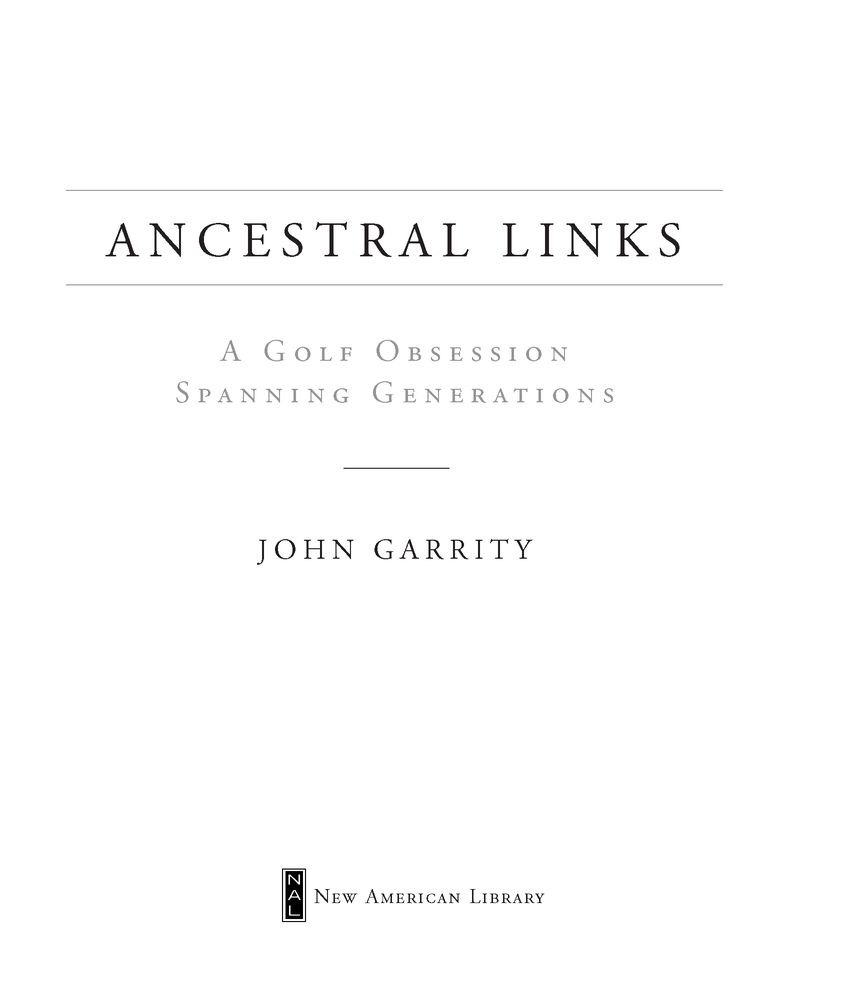Table of Contents
To my discovered cousin, Anne Hughes,
who is too wonderful for words.
PROLOGUE
NEW RICHMOND, WISCONSIN, MAY 23-24, 2008
The burial urn had caught a pretty good lie. The ground was flat, and the lawn smelled of a recent mowing. Grass clippings clung to my shoes. It was a warm, sunny afternoon. The cherry trees were in bloom, their pink branches swaying gently in a one-club wind.
The urn was a polished walnut box with a cross carved on the lid. A man in a brown truck had delivered it to my Kansas City home a week or so before, and I had wasted no time opening the package. I removed six layers of bubble wrap and a soft drawstring bag to get to the prize.
I whistled in admiration.
Its fantastic, I said to my wife, Pat. I ran my fingertips over the box, admiring the color and grain. Its almost too beautiful.
Pat had found the urn on the Web site of the New Melleray Abbey in Peosta, Iowa. Trappist monks in belted robes had labored over it for days, maybe even weeks. I pictured the monks at their work benches, doing the Lords work with hand planes, corner clamps and squeeze bottles of yellow glue.
But now the urn was in Wisconsinbasking in the sun on a green square of artificial turf at the edge of a freshly dug hole.
Daddy loved walnut, said my sister, Terry, who had flown up from Florida for the ceremony. There was a restaurant at the old Muehlbach Hotel that had walnut paneling, and hed always comment on it and run his hands over it.
I smiled and took Pats hand. There were maybe twenty of us gathered at the grave sitefriends and relatives from Kansas City, Chicago, and Minneapolis. The editor of the New Richmond News stood at a discreet distance, taking notes and photographs.
I had pulled into town the day before with my dads ashes and my golf clubs in the trunk. I looked to the left as I rolled past the nine-hole New Richmond Links, a meadowland course bounded by three roads and a fenced pasture. A little farther on I caught glimpses of the eighteen-hole New Richmond Golf Club through a wall of trees planted long after my father had left his childhood home. I passed a sign: NEW RICHMOND, POP. 7,858.
The number on the sign produced a twinge of guilt. It was not much greater than the number of days that had passed since my fathers death. For seventeen years his ashes had sat on a closet shelf in our Kansas City homein the very room, in fact, where he had died of lymphoma at age eighty-five.
We certainly meant no disrespect by storing Dads ashes with the office supplies. His funeral mass, staged by my church liturgist wife, had gotten favorable reviews. Pat had put his old wing chair at the front of the church, next to the casket. On a side table she laid out his bifocals, a bag of chocolate-covered caramels, and a few of his favorite booksMaughams The Razors Edge, OConnors The Last Hurrah, Foresters Admiral Hornblower in the West Indies, and Rex Lardner Jr.s Out of the Bunker and Into the Trees. Against the chair she propped Dads old sand wedge, the club he had gripped and regripped while watching episodes of Matlock, Wheel of Fortune, and Murder, She Wrote. At the mass, Pat brought tears to everyones eyes by singing An Irish Blessingbut not before Michael Farrell, editor of the National Catholic Reporter, had won over the audience with an Irish-accented reading from P. G. Wodehouses The Golf Omnibus.
But it had always been our intention to return Dads remains to the small town where his golf mania had taken root. So there we all were at last, on an afternoon in spring, in the cemetery behind New Richmonds Immaculate Conception Church. Looking up, I watched a westbound jet drag its contrail across the sky. Beautiful day, I whispered to Pat.
Looking around, I scanned the headstones and monuments for the now-familiar names: Padden, Casey, Hughes, McNally, Lynch, Barrett, Reilly, Lavelle. Dads marker, installed according to my instructions, was a small granite stone set flush with the ground:
JOHN B. JaCk GARRITY
1905-1991
A few feet away, two older stones marked the graves of my paternal great-grandparents, Michael Garrity (1830-1883) and Elizabeth Garrity (1826-1909).
A little voice piped up: Whos in there?
My four-year-old granddaughter, Madeline Olsen, and her six-year-old brother, Jack, were standing at the edge of the excavation, staring at the cremation urn. Maddie had asked the question, and now she looked up at the circle of grown-ups, who chuckled indulgently.
Its Grandpa Jack, said her mothermy daughter, Teresa.
Maddie leaned forward to peer into the depths. Are you going to put that box in the hole?
This time she looked to Father Jim Brinkman, standing on the other side of the grave. But I didnt hear the amused pastors reply. Instead, I heard my fathers fulsome laugh and imagined his response: Thats the object of the game, Junior.
I stared at the beautiful walnut box, sitting at the edge of the hole, and pictured Gods hands reaching down with the heavenly putter for the tap-in.
The following morning, a Saturday, I slipped away from the motel and drove out Business 64 to the New Richmond Golf Club. I parked at the top of the hill in a shady spot and walked around the cedar-sided clubhouse to the pro shop, where an assistant pro, forewarned, handed me the key to a golf cart.
I wont be long, I said.
I took my pick from a row of electric carts and drove back up the asphalt path to the parking lot. Stopping only to pick up some items from my car, I steered the cart downhill through the trees, around the superintendents shed, and out onto the course.
It was a golf course my dad would not have recognized. The tree-lined fairways were silky green, the bordering roughs a darker hue. The greens? I wont insult your intelligence by comparing them to the greens at Augusta National, but New Richmonds greens would hold up for speed and appearance against those at your better private clubs. The course was definitely prettier than most. Flowering trees and shrubs drew the eye with their fat splashes of pink, white and lavender; bright tulips rose out of memorial flower beds. The white bark of birch trees stood out against a perimeter of tall pines and spruces. My dads affectionate appraisal of his hometown trackpossibly the lousiest damn course in Wisconsinwas clearly out-of-date.
It took no more than two or three minutes to reach the northeast corner of the property, and even less time to find what I was looking for. I parked thirty yards or so behind the eighth green, where trees partially hid the grassy berm of the Soo Line railroad tracks, and walked straight to my target: an old patch of concrete. Roughly six feet square and obscured by encroaching turfgrass, the concrete was an anomaly in that sylvan setting. Was it part of an old foundation? A loading dock? A granary floor? Whatever it was, the concrete must have been left there for a reason. A lone worker on a Bobcat could have broken it up and hauled it off in minutes.
I knelt at the head of the slab and jabbed a hand spade into the soft turf, making repeated stabs until I had cut a rectangle a foot long and six inches wide. I carefully lifted the plug of turf with the spade and set it to one side. I then used a hand hoe to deepen the excavation. The walls of my hole were grave-digger straight. The displaced dirt formed a mound of perfect brown topsoila loamy substrate that probably hadnt been disturbed for decades.







